Title:Correlation among defect, electronic structure, and phonon mode in organicinorganic hybrid material
Speaker:Min-Cherl JUNG, Ph.D.
Associate Professor,Institute of Pure and Applied Sciences,The University of Tsukuba
Inviter:Prof. Yabing Qi
Time:14:00, April 17, 2025 (Beijing Time)
Location:Room 202, Yue-Kong Pao Library's Annex
Abstract:
Dr. Min-Cherl Jung’s research focuses on organic-inorganic hybrid perovskite materials, exploring their defect structures, electronic properties, and phonon dynamics using advanced surface physics techniques. Employing synchrotron radiation-based methods like soft X-ray photoelectron spectroscopy (XPS), near-edge X-ray absorption fine structure (NEXAFS), and angle-resolved photoelectron spectroscopy (ARPES), the studies investigate chemical and structural defects, energy band correlations, and phonon-dispersion in 3D and 2D perovskite single crystals (e.g., MAPbI₃, FAPbI₃, CsPbI₃) and thin films. These materials hold promise for solar-cell, optoelectronics and sensors but face challenges like degradation and contamination, which the research aims to overcome.
Recent work addresses degradation and instability issues, particularly defect effects, using THz-time domain spectroscopy (THz-TDS) to probe phonon vibration modes. Key findings include correlations among defects, electronic structures, and phonon modes in the range of 0.5-3.0 THz.
The future research proposes multilayer fabrication methods to enhance stability and functionality, targeting applications in THz sensors with flexibility for molecule/bio-sensitive area. Future plans emphasize novel hybrid perovskite systems and international collaborations to advance material performance.

Biography:
 Dr. Min-Cherl Jung is an Associate Professor in the Institute of Pure and Applied Sciences at the University of Tsukuba, Japan, with expertise in surface physics and advanced spectroscopic techniques. Holding a Ph.D. in Surface Physics from the University of Seoul (2003) in the Republic of Korea, his research focuses on organic-inorganic hybrid perovskite materials, defect structures, and THz-based applications, utilizing tools like XPS, UPS, and ARPES with synchrotron radiation.
Dr. Min-Cherl Jung is an Associate Professor in the Institute of Pure and Applied Sciences at the University of Tsukuba, Japan, with expertise in surface physics and advanced spectroscopic techniques. Holding a Ph.D. in Surface Physics from the University of Seoul (2003) in the Republic of Korea, his research focuses on organic-inorganic hybrid perovskite materials, defect structures, and THz-based applications, utilizing tools like XPS, UPS, and ARPES with synchrotron radiation.
Dr. Jung’s career spans academia and industry, including roles at Nara Institute of Science and Technology (Japan), Okinawa Institute of Science and Technology (Japan), Samsung Electronics (Korea), and Pohang Accelerator Laboratory (Korea). He has published 70 peer-reviewed SCI papers, secured five patents, and obtained multiple research grants as principal investigator. His work bridges fundamental science and practical applications, particularly in optoelectronics and semiconductor devices.
A dedicated educator, Dr. Jung teaches courses in electromagnetism, quantum physics, and technical English, emphasizing internationalization and research integration. He has delivered invited talks globally and received awards, including the 1st JUSUNG Technology Award (2008) and Outstanding Reviewer recognition (2017).







